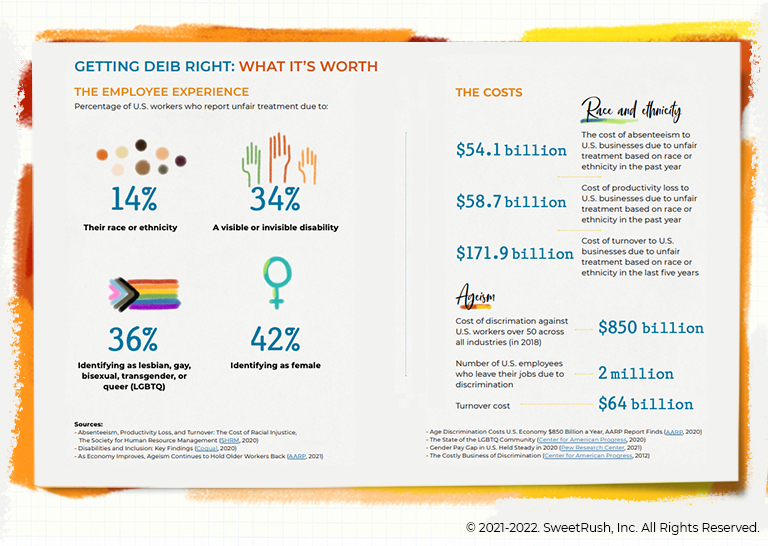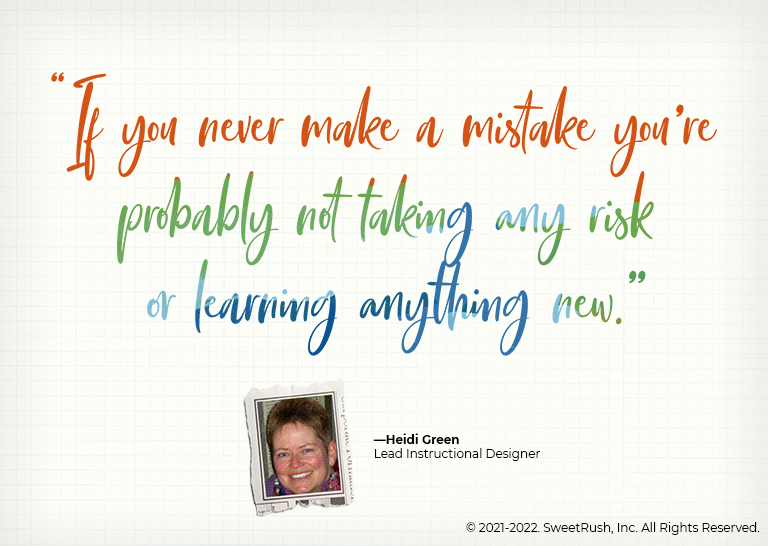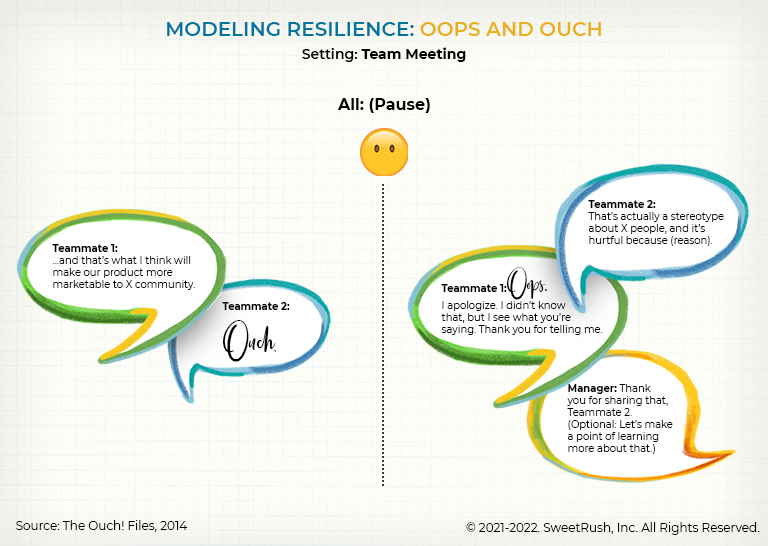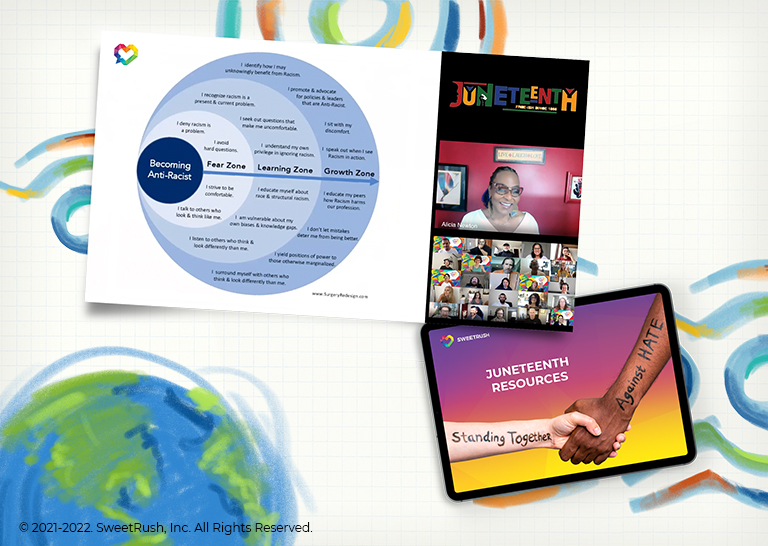Imagine you’re on a trip to another country. After sleeping off the jet lag, what’s the first thing you do?
Some of us might head straight to the nearest landmark, while others might embark upon a challenging hike. Still others might choose a leisurely stroll around the neighborhood, exploring the local shops, cafes, or even the supermarket.
It’s fascinating to observe what daily life looks like for people in that neighborhood, in that city—and maybe even strike up a conversation with the locals. After all, connecting with others is one of the perks of travel!
Back home, though, something happens to that spirit of curiosity and discovery. We become guarded, even fearful, about the differences between ourselves and others in our neighborhoods, workplaces, and communities. The sharing of experiences and cultures that was so enjoyable on vacation turns fraught.
Granted, the stakes are lower on vacation. If we make a false assumption or don’t know a term, we’re presumed innocent. At home, we’re expected to get it right every time.
We become so fearful of saying something wrong that instead of engaging our curiosity, we pretend the differences between ourselves and others don’t exist. After all, many of us have been taught that overlooking them is the polite thing to do. We may also have been conditioned to believe that smooth, harmonious conversations are the most productive ones. Why rock the boat?
The Human and Business Costs of Not Rocking the Boat
The problem is that the things we smooth over, don’t mention, and otherwise ignore start to feel like taboos. And our teammates who live life with different skin colors, bodies, abilities, genders, and relationships begin to feel that they’d better hide these fundamental parts of themselves.
When any of our employees can’t bring their full selves to work, we lose out on the benefits of a diverse organization: smarter teams who focus more on facts and innovation (Harvard Business Review, 2016) and help us explore problems and our own products and services through multiple lenses.
When we get diversity and inclusion right, we enjoy an 11% boost in our financial performance (McKinsey, 2020). Companies that don’t get it right suffer the cost of turnover, absenteeism, and lost productivity. (Delve further into the business benefits of boosting your employees’ emotional resilience and potential.)

Getting it right doesn’t mean memorizing long lists of new vocabulary or making stilted conversation to avoid any possible offense. What it does entail is applying human-centered communication practices (This five-step challenge will help your team get started!) in the service of including and valuing all people. You’ll know you’re hitting the mark when your people are inspired to step up and initiate their own grassroots projects.
We can’t tell you how to reach the summit of enlightenment—because our own approach to diversity, equity, inclusion, and belonging is constantly shifting and evolving. But we can share some of the practices that have helped us over the course of our climb.
Model Resilience
No manager likes to plan for the worst. But when we have a team of individuals with different perspectives and life experiences, dissent—even occasional conflict—is inevitable.
That doesn’t mean that we devolve into shouting matches or sulking. It does mean that we use conflict as an opportunity to learn about one another and how to work better together. It may mean that someone’s presented a perspective we’ve never considered before. It may be new only to us, or it may be new to the world—after all, we’re creating the future state together.
Even the most perfectly empathetic manager won’t get everything right on the first try. The first try is the key phrase here: We’ve got to try again, even after we mess up or hurt someone’s feelings. In fact, trying again immediately is the best way to recover.

No one can be an expert on every ethnic, cultural, or gender identity—nor about every possible way of being in one’s brain and body. We will make mistakes, no matter how curious we are and how much we care. And when those mistakes happen, we can’t write each other off forever.
That’s the non-resilient approach. And it’s not a human- or life-centered approach.
The human-centered approach is to hold one another accountable for learning to do better. We do that by speaking up when someone’s words or actions hurt our feelings—and briefly sharing why.
That’s the resilient approach. It means that we’re able to understand that the person who has hurt us is also a person who cares for us and means well. It’s the mindset we’re (usually!) able to apply when we’re upset with our loved ones: We can dislike the words or actions while keeping sight of our love for the person.
Two tiny words can help you maintain that mindset: ouch and oops. They’re part of a larger technique called Communication Recovery—a resilience-based technique that helps us “rebuild trust and rapport, and move forward” (The Ouch! Files, 2014). Here’s how that might look in action.

You might have noticed the pause in the middle. That’s critical—and it’s where we come in as leaders. We need to stop the conversation and let the person who’s been hurt have the floor.
After the teammates address each other, we step in as leaders to thank the person who shared the ouch—and, if it feels appropriate, encourage everyone present to learn more about that topic.
Speaking things aloud removes the taboos around hurt feelings and messing up. Rather than feeling insulted and suffering in silence, Teammate 2 secures a genuine apology from Teammate 1. And rather than making Teammate 1’s mistake a source of shame and secrecy, we model how the entire team can learn from it—without dwelling on it.
As managers, we model both responsibility to one another and responsibility for moving on. Handling hurt feelings this way requires a leap of faith from everyone. And when our people are able to make it, it’s a sign of resilience and mutual trust.
Hold Space for the Hard Stuff
We’re not talking about top-shelf whiskey (sorry!). What we’re after here is open and inclusive communication.
For example, when challenging issues arise outside of work in a nation, region, or the entire world, the anxiety they provoke follows us to work. Acknowledging these issues is part of fostering an environment of psychological safety.
And though we don’t need to delve deeply into the issue in every 1:1 or team meeting, it’s important to acknowledge when we’re having a collective moment. This is a great place to share your own feelings of fear or hope—and invite your team to do the same.
When tensions rise or tempers flare around an issue, that’s a sign that it’s time to explore it more deeply. (Remember: What isn’t talked about becomes a taboo—and a source of hard feelings.) To do that well, you might need to engage an educator who can provide some background—and engage your team in a productive, challenging conversation. If that expertise doesn’t lie within your organization, look externally.

For example, when we wanted to learn more about the history of Juneteenth and how we might advocate together for people of color, we invited an expert to spark our imaginations. In June 2021, Certified Diversity and Inclusion Master Trainer, Facilitator, and Consultant Alicia Newton engaged our entire team in a discussion of the history of Juneteenth. Together, we considered why this holiday isn’t as well known as our other Independence Day and, in small groups, we traded ideas about ways each of us could become advocates for inclusion.
We found once again that our opinions differ. Our experiences also differ. Sometimes, we might feel hurt because someone’s experience doesn’t yet acknowledge our own. But that won’t stop us from holding challenging discussions about how to do better together.
Being part of a human-centered organization means that we sit with one another through the challenges—just as we do through consensus and celebration (Harvard Business Review, 2021). By dealing with the tough stuff together, in one virtual “room,” we practice courage and (radical) candor. (Learn more best practices for virtual management with our remote teams Q&A.)
Diverse Teams + Emotional Resilience → Innovation
You’ve probably noticed that we’ve only touched on a few types of diversity here. Your team members also differ in the ways they pay attention, brainstorm, collaborate, socialize, and so on.
That’s good great news! A mix of cognitive styles, life experiences, and ways of seeing the world makes a team stronger, smarter, and more innovative. (Looking for ways to invite your diverse team to bring their full selves to the table? Try our tips for better virtual—or hybrid, or live!—collaboration.)
Curious about more human-centered communication practices that support inclusive communication and psychological safety? Check out our eBook, It’s All About Your People!: Embracing Human-Centered Business, Workplace Culture, and Learning Design. You’ll find plenty of lessons about how to re-create teamwork as a source of fulfillment and emotional resilience—all tested over our two decades as a human-centered organization and decade-plus as a fully remote team.




